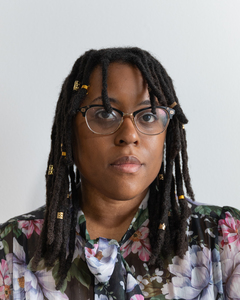
Jasmine Best
Athens, GA
Southern American artist uses her personal memories and archival research to analyze subtext of how Black and Southern cultures influence American culture.
Message
Southern American artist Jasmine Best uses her personal memories and archival research to analyze subtext created by how black and southern American cultures influence, clash, and are turned into mainstream American culture.
She holds an MFA with Distinction from the Lamar Dodd School of Art at the University of Georgia (2025). And a Bachelor of Fine Arts from the University of North Carolina at Greensboro (2016). Best recently was awarded the Honorable Mention prize at SECAC 2024 and was the 2024 summer Artist in Residence of the James Castle House Museum.
She works with a variety of fiber mediums as well as digital art-making. Her work is based on drawing as an improvisational and research practice.
Statement
Best finds connections between storytelling, folklore, and modern black culture by examining the consequences of the constant absorption but failed assimilation of
Black culture into mainstream Western culture both past and present. Best combines personal experiences and signifying practices through storytelling of the complexities of how Black people have wrestled with how blackness becomes Americana. Best is interested in how Black identity's insider/outsider characteristics manifest in archival materials, oral traditions, everyday life, and online spaces. Their research-based practice investigates complicated social capital dynamics entangled with narratives where race and gender intersect.
As one descended from those who chose to stay in the Southern United States, Best reinterprets folk histories through personal corporeal archeology of the Southern African American storytelling/audience canon. Best deep reads the gendered implications of archived narratives but also the gendered influence of the storyteller, the audience, and the archivist of these folk stories and histories to bring cultural subtext to the forefront. Best’s work situates itself in musical and literary improvisational theory related to blues ideology and Black vernacular culture. These improvisational applications are focused on Black subjectivity’s relationship to nonconformity and individual future-facing liberatory practices.
Best’s use of fibers recontextualizes the women who came before her and used such materials to curate in the only places they had full control: their homes. Medium specificity materializes the emotions tied to memories and speaks to the materials' narrative associations. These materials are utilized as a means of turning the everyday into the supernatural and legitimizing that which can not be easily noted in traditional Western institutions as forms of Black resistance.